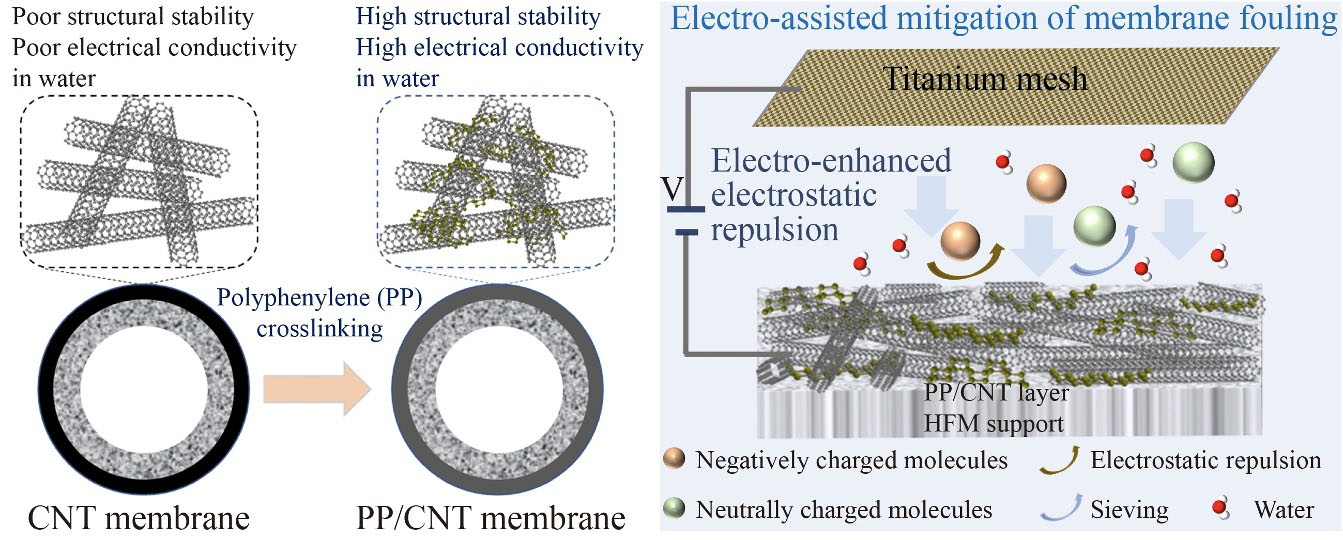| Nov 17, 2023 |
Breakthrough in water treatment - the polyphenylene/carbon nanotube composite membrane
(Nanowerk News) In a new study published in the journal Frontiers of Environmental Science & Engineering ("Conductive and stable polyphenylene/CNT composite membrane for electrically enhanced membrane fouling mitigation"), researchers from Dalian University of Technology have have introduced a groundbreaking polyphenylene/carbon nanotube (PP/CNT) composite membrane.
|
|
This cutting-edge development in membrane technology promises a revolutionary approach to water treatment and wastewater management. The PP/CNT membrane stands out for its remarkable electrical conductivity and superior antifouling properties, effectively tackling the persistent issue of membrane fouling in water purification processes.
|
 |
| Graphical abstract of the work. (© Frontiers of Environmental Science & Engineering)
|
|
The study conducted an in-depth analysis of the properties and performance of the PP/CNT membrane, utilizing sophisticated techniques like SEM imaging and comprehensive chemical analysis. These meticulous examinations confirmed the membrane's impeccable structure and successful creation, showcasing a flawless configuration with high stability under diverse conditions.
|
|
In terms of electrical conductivity, the membrane excelled, particularly in wet environments, where it demonstrated conductivity levels significantly surpassing those of its counterparts.
|
|
An essential aspect of the membrane's design, its hydrophilicity, remained intact post-PP crosslinking, a vital attribute contributing to its antifouling efficiency.
|
|
A standout feature of the PP/CNT membrane is its exceptional antifouling performance when subjected to electro-assistance, especially under a negative voltage. This novel method markedly diminishes flux reduction and effectively counters fouling, a fact underscored in tests against a variety of pollutants such as humic acid, sodium alginate, and E. coli.
|
|
The application of a negative voltage notably enhances the electrostatic repulsion between the negatively charged pollutants and the membrane surface. Conversely, a positive voltage boosts the removal efficiency through mechanisms like electro-adsorption and electrooxidation.
|
|
Most impressively, the PP/CNT membrane operating at -2.0 V demonstrated extraordinary stability and reusability. It achieved nearly complete flux recovery after backwashing and exhibited significantly lower irreversible fouling compared to conventional commercial membranes.
|
|
The implications of this development for water treatment applications are profound. The PP/CNT composite membrane opens new avenues for more effective, sustainable, and reliable water purification processes, addressing one of the most critical challenges in environmental management and public health.
|

